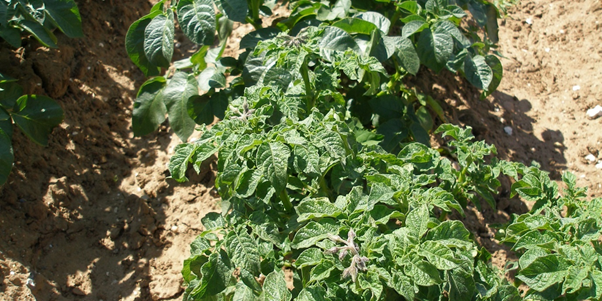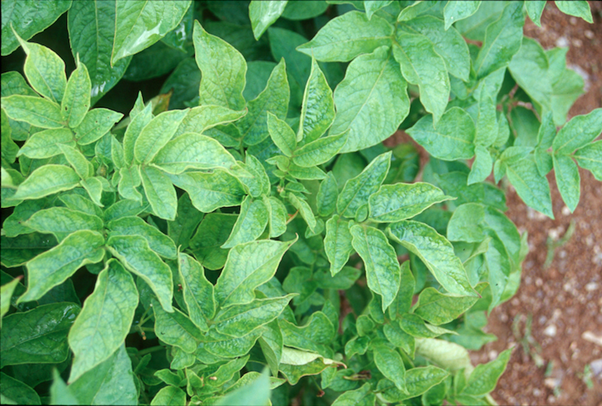Potato virus Y (PVY)
PVY belongs to the genus of Potivirus and is a major economic disease agent in most solanaceous crops. PVY is the most economically important disease problem in seed potatoes in many areas of the world. The virus is responsible for decreases in yield and quality, but the main issue in seed potato production is a requirement for strict virus tolerance limits for certified seed. High levels of PVY have been responsible for many seed lots being rejected as certified seed, resulting in a significant reduction in crop value, and at times in a shortage of certified seed, especially of certain cultivars that are highly susceptible to infection.
PVY occurs mainly in three different strains:
- The ordinary strain: PVYO
- Tobacco venal necrosis strain: PVY N
- And the stipple streak strain: PVYC
It is not only the virus strain that determines the development and severity of the symptoms, but also the potato cultivar, as well as environmental factors. In fact, some potato cultivars show fewer symptoms than others. However, the yield reduction remains the same even though symptoms on the aerial plant parts are not severe or not visible at all. Therefore, visible symptom expression cannot be taken as a reliable indicator for infection (Hane and Hamm, 1999; Weidemann, 1988).
Once the plant is infected with PVY, the virus is also transferred with seed tubers to the next generation of plants. The new growing plants contain the virus right from the start and form the source for virus spread with aphids the next year. The detection of viruses in plants is time-consuming and expensive.
As potatoes are propagated vegetatively, viruses accumulate in the tubers and infest new deriving plants immediately. If the plants suffer from this so-called secondary infection of PVY, they are often stunted and have wrinkly leaves (Kerlan, 2006)
Uninfected potato plants can be inoculated with PVY mechanically or through damages on the plant. But the most important way of primary infection is vector transmission with aphids.

